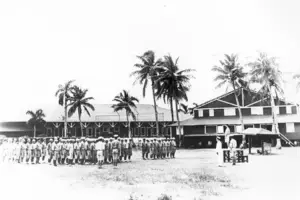
Japanese Occupation of Guam
The outbreak of the Pacific War began with Japan’s attack on Pearl Harbor on 8 December (7 December in Hawai’i) 1941 with a subsequent air

The outbreak of the Pacific War began with Japan’s attack on Pearl Harbor on 8 December (7 December in Hawai’i) 1941 with a subsequent air

The Japanese Navy was responsible for the administration of Guam after the occupation of the island on 10 December 1941. Japan’s basic military administration policies
The Japanese military occupation of Guam, from December 1941 through July 1944, resulted in a variety of political, economic and social impacts on the people
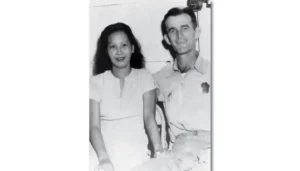
Robert O’Brien (1908 – 1988), born in New York, came to Guam in the 1930s with the US Navy. He married Marie Santos Inouye, a
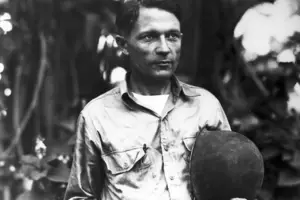
George R. Tweed (1902 – 1989) – was an American Navy man who was able to escape capture from the Japanese during their occupation of
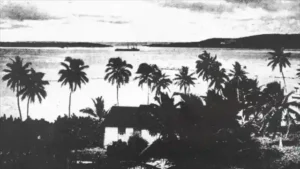
In 1917 the United States declared war on Germany, and just by chance, a German cruiser, the SMS Cormoran II, was docked at Apra Harbor.
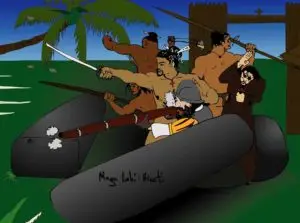
Not all CHamorus fought valiantly against Spanish occupation. There were some who chose to side with the Spanish for a variety of reasons.
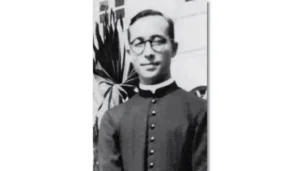
Father Jesus Baza Duenas (1911 – 1944) was the second CHamoru to be ordained a priest. He led the Catholic Church during the Japanese occupation
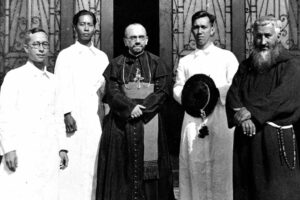
From a religious perspective, World War II in Guam, or I Tiempon Chapoñes as Chamorros/CHamorus referred to it, was traumatic for a number of reasons.
Slingstones were used as weapons by ancient CHamoru warriors. Slingstones are stones of various sizes sharpened at both ends and hurled from a sling with